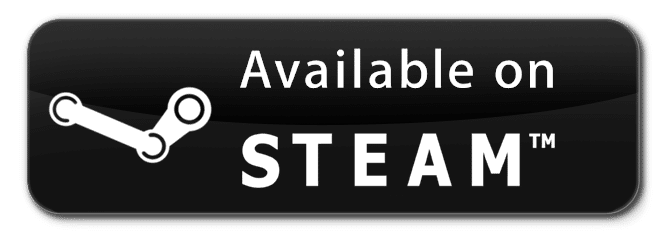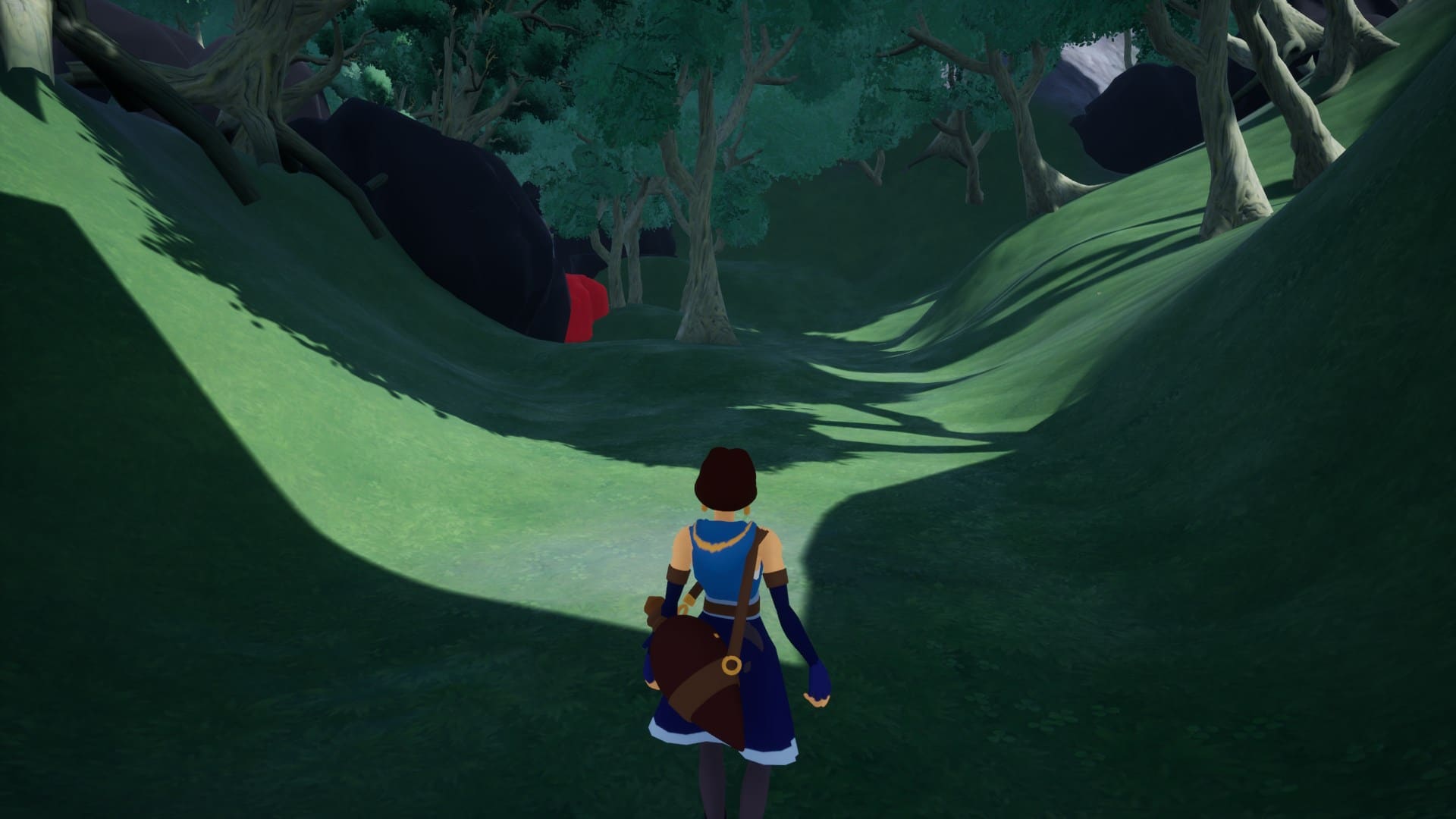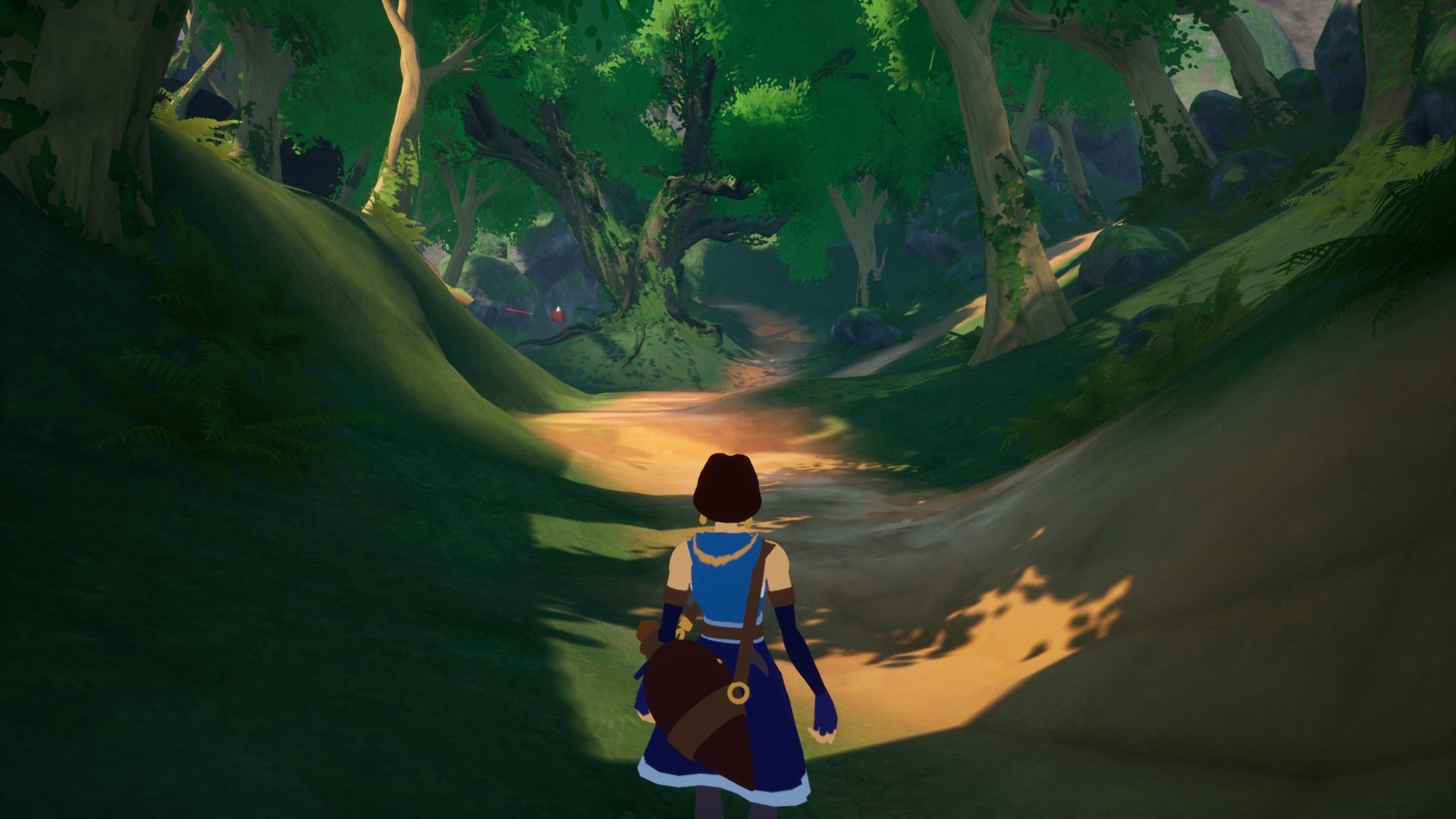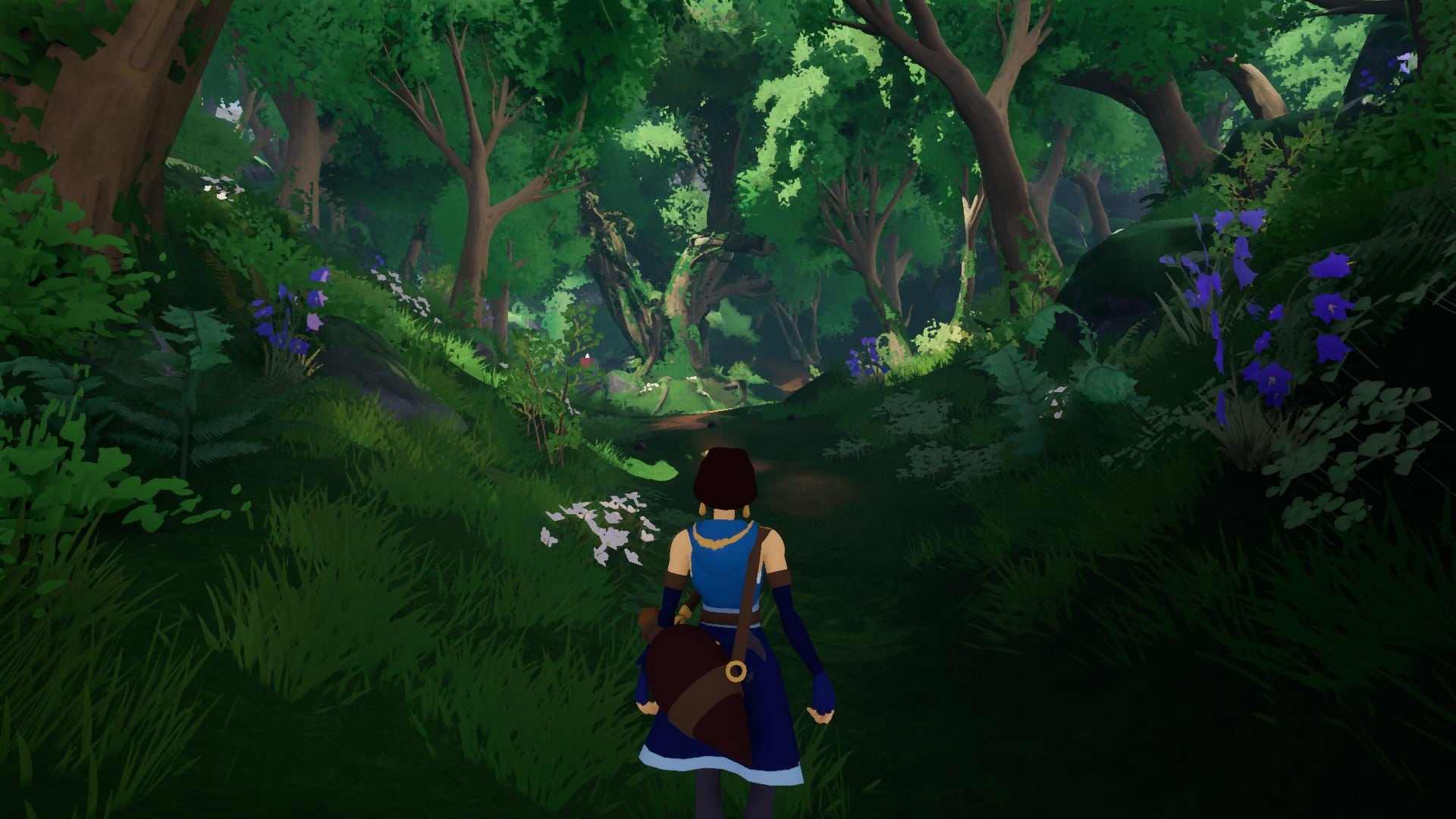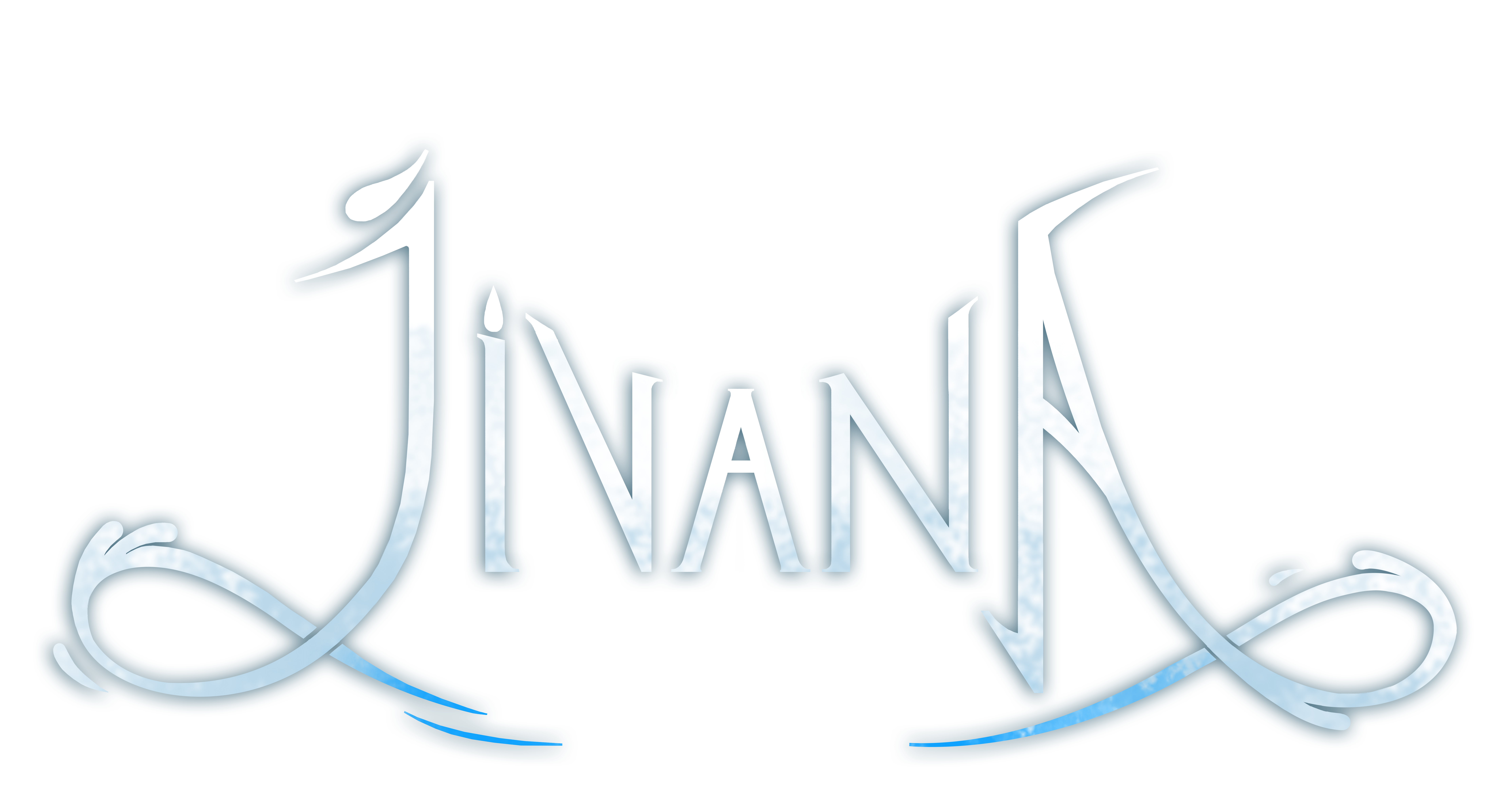
Team – 11 people
Engine – Unreal Engine 4
Type – 3rd person Adventure/Puzzle
One player
Duration – 1 Year
Date – 05/2020 – 06/2021
Level Designer
- Narrative and gameplay intention
- Puzzle design
- Documents :
- TLPM (Tease, Learning, Practice, Master)
- Contrast and intensity curves
- RLD (Rational Level Design)
- Prod of 3 levels (intro/main/pursuit)
- Blockouts (BSP) :
- Lighting and points of view
- Metrics and learning map
- Puzzle tests (workshop)
- Environmental storytelling
- Lighting and points of view
- Iterative work with environment artists
- Use of procedural tools (made with houdini)
Context
Jivana is our graduation project at RUBIKA Supinfogame school. With a team of 11 students (3 designers, 3 programmers, 5 game artists) we had to make a 30/60 min prototype.
Concept
The player embodies Aélis, the pathfinder of a convoy driven to exodus by a cataclysm. Her ability to manipulate water allows her to shape nature and open the way for the community she is the guardian of.
Jivana full playthrough
Levels
Level 1 : Introduction
- Weather : Cloudless night
- Gameplay Intention :
- Basic controller introduction (platforming, plant interactions)
- Narrative Intention :
- Discover the world of Jivana
- Get to know Aélis and secondary characters
- Learn : distant cataclysm importance
Gameplay Introduction
Level 2 : Water Gates
- Weather : Nice cloudless daytime
- Gameplay Intention :
- Intro to puzzles
- Intro to water movements (fluidity)
- Controller contrast : basic VS water
- Narrative Intention :
- Fluid and Organic forest level
- Discovery/wonder : establishing shots and points of view (teasing)
- Nature VS ancient civilization
- Learn : approching cataclysm threat
Gameplay Level 2
Level 3 : Pursuit
- Weather : Storm
- Gameplay Intention :
- Original gameplay phase : use contextual cameras and staging
- Cataclysm pursuit : platforming challenge
- “The grief curve” rhythm
- Narrative Intention :
- Spectacular moment : Increasing intensity of the storm
- “The grief curve” : Secondary character death
- Aélis, guardian of the convoy
Gameplay pursuit sequence
LD Loop and intentions
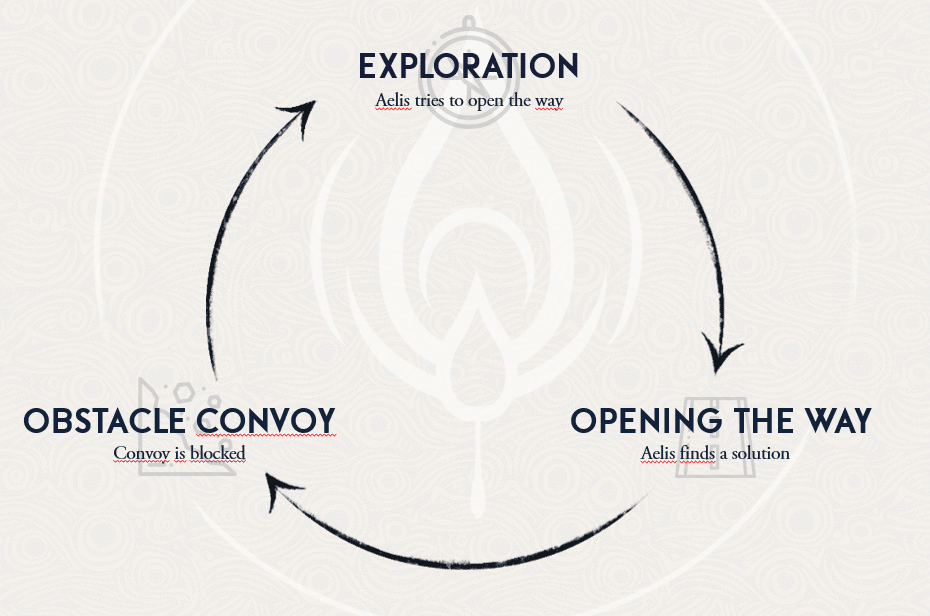
Fluid / Organic
- Organic levels and environments:
Organic level construction in shape and player navigation. Puzzles and platforming challenges embedded in the environment.
- Fluidity contrast:
Addition of water at a specific point in the level to create an intensity peak and make the player feel the difference between walking and enjoying the juiciness of surf.
Discovery / Wonder
- Surprise and wonder:
Slightly tortuous levels in which the player must create a mental map. Teasing with point of views on paths and elements that the player will access later.
- Environments discovery:
Environments built through the contrast between nature and the remains of an ancient civilization. Focus on “establishing shots” and “points of view” as discovery moments.
Spectacular Ending
- Climax:
Spectacular moment of maximum intensity reflecting the powerful side of player’s powers. Original gameplay phase through staging and storytelling.
Methodology
1. Intentions and references
- Use of contrast and intensity curves (semantic, pictorial, spatial).
- Level structure and rhythm.
- TLPM matrix and learning of mechanics.
- Looking for references.
2. Workshop and sketches
- Bricks and level design workshops using all the game mechanics. (paper or in game)
- Tests of game situations.
- Define the metrics.
3. Level structure
- Shaping the topography.
- Adding main landmarks and points of view (composition).
4. Primary blockout
- Construction of a finishable level.
- Set up initial tests to see the first problems.
- Working on ways to guide the player through the level.
5. 2nd Iteration blockout
- Improve the level by adding some details (environmental storytelling).
- Implement the first assets guiding the player.
6. Feedbacks
- Make many playtests.
- Improve the level iteratively.

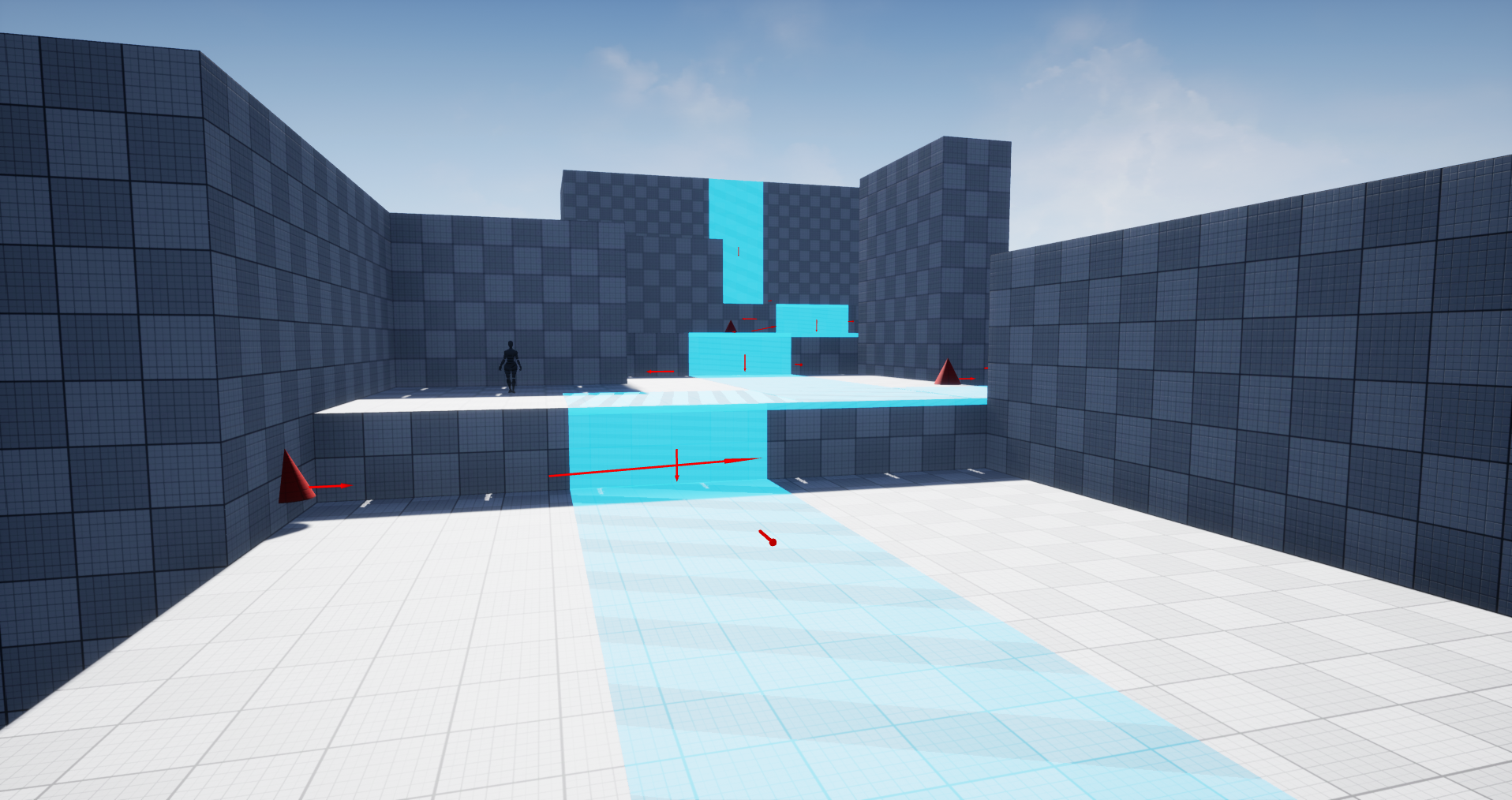
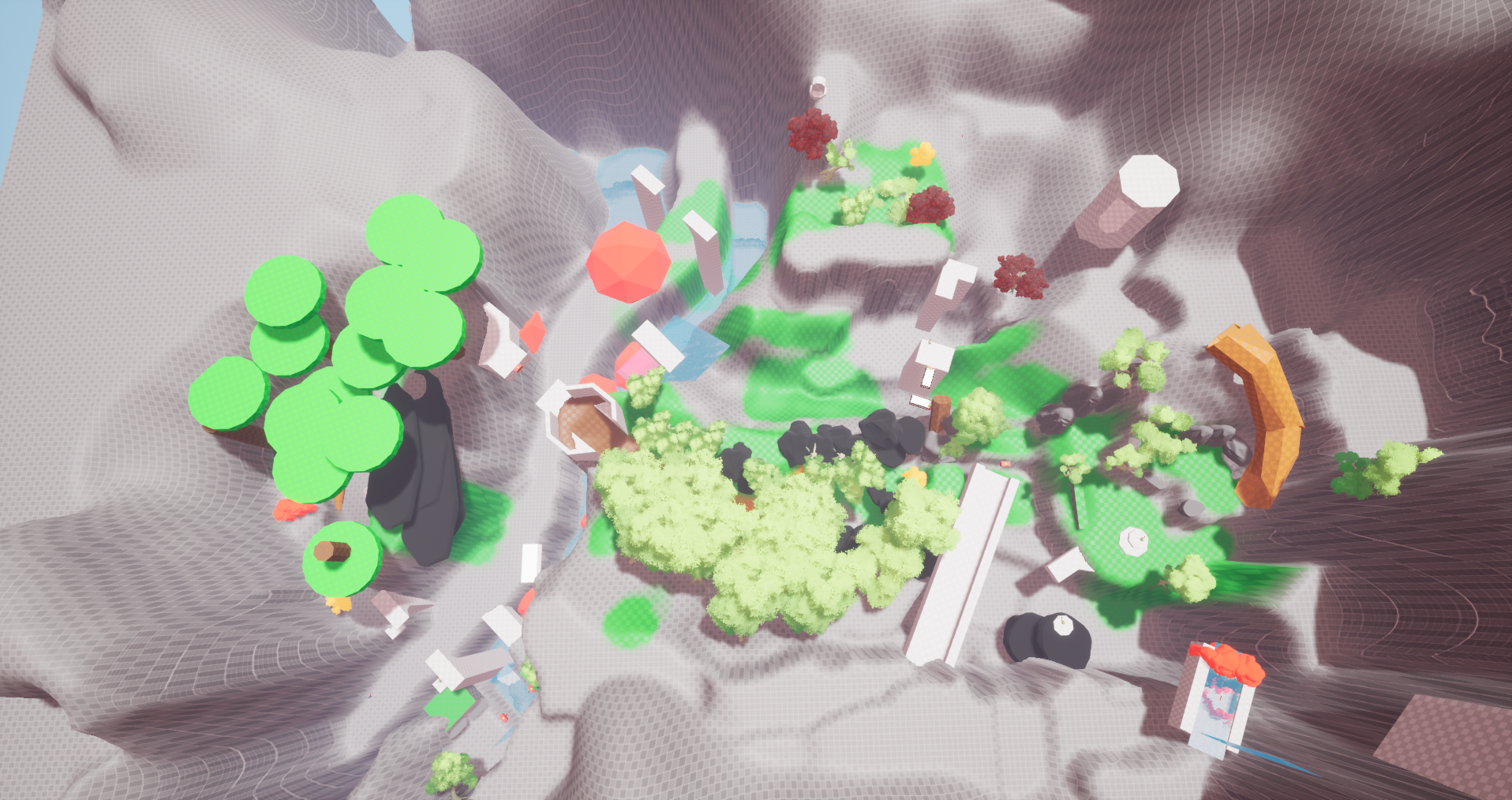
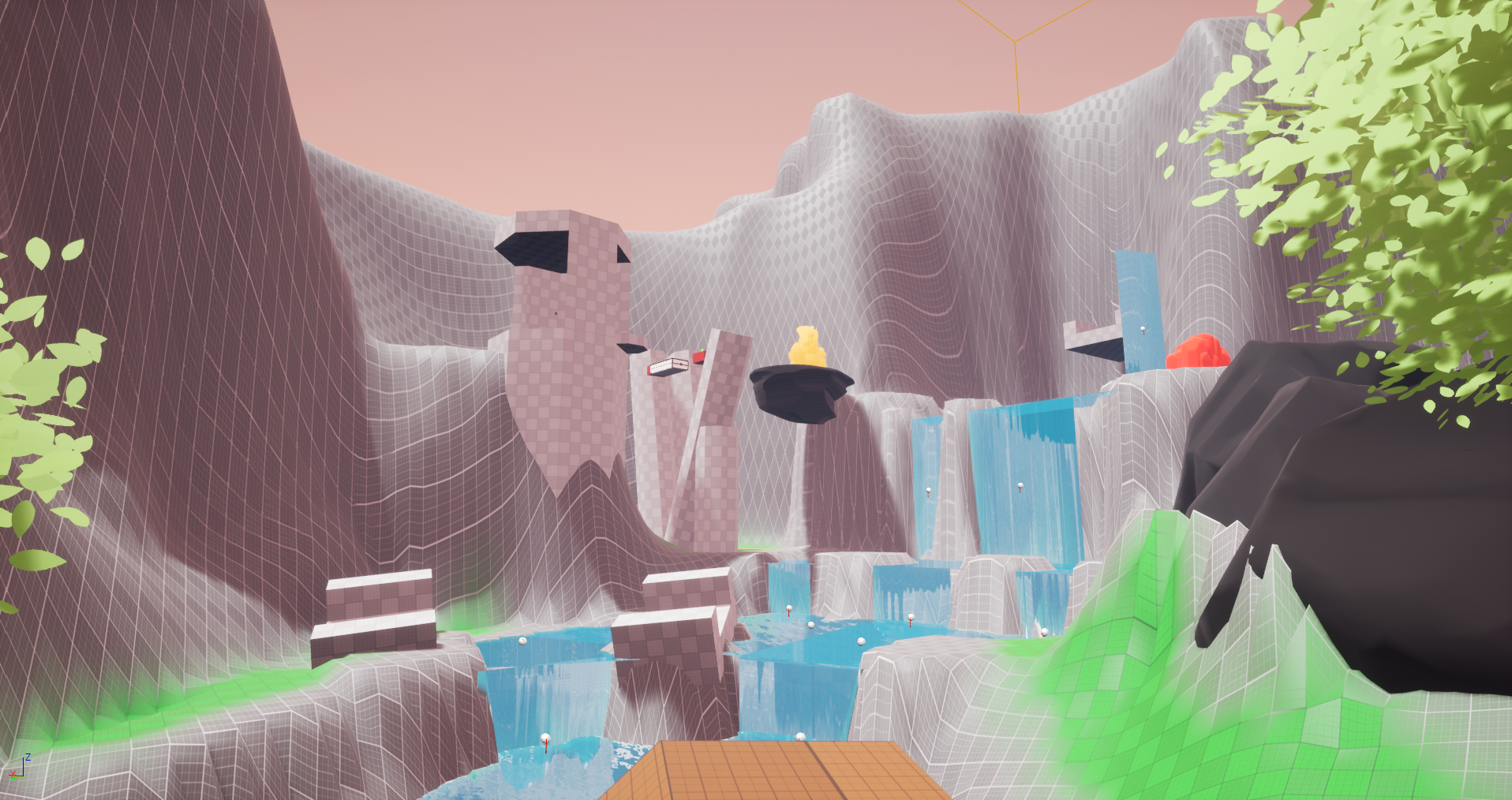
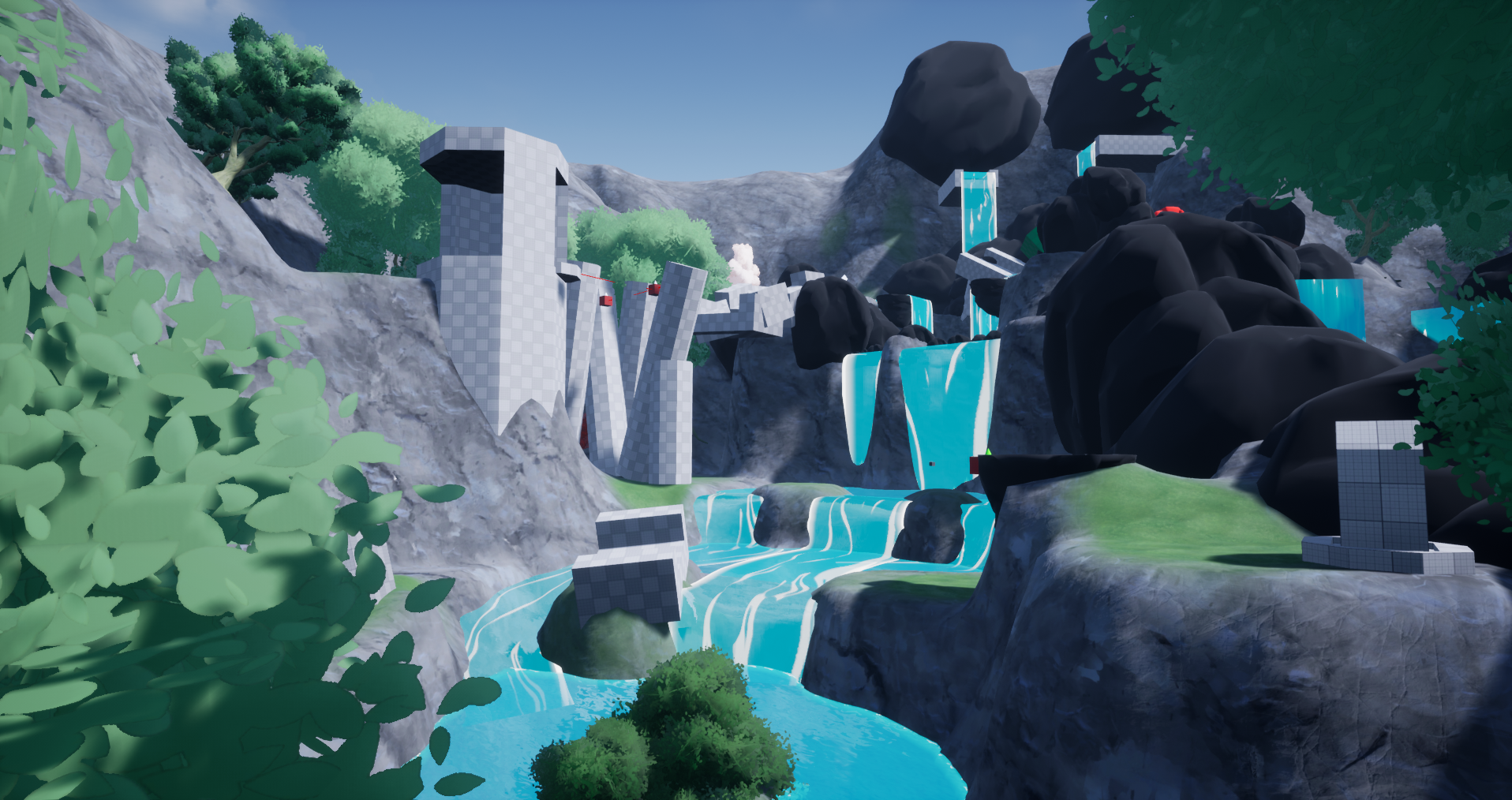
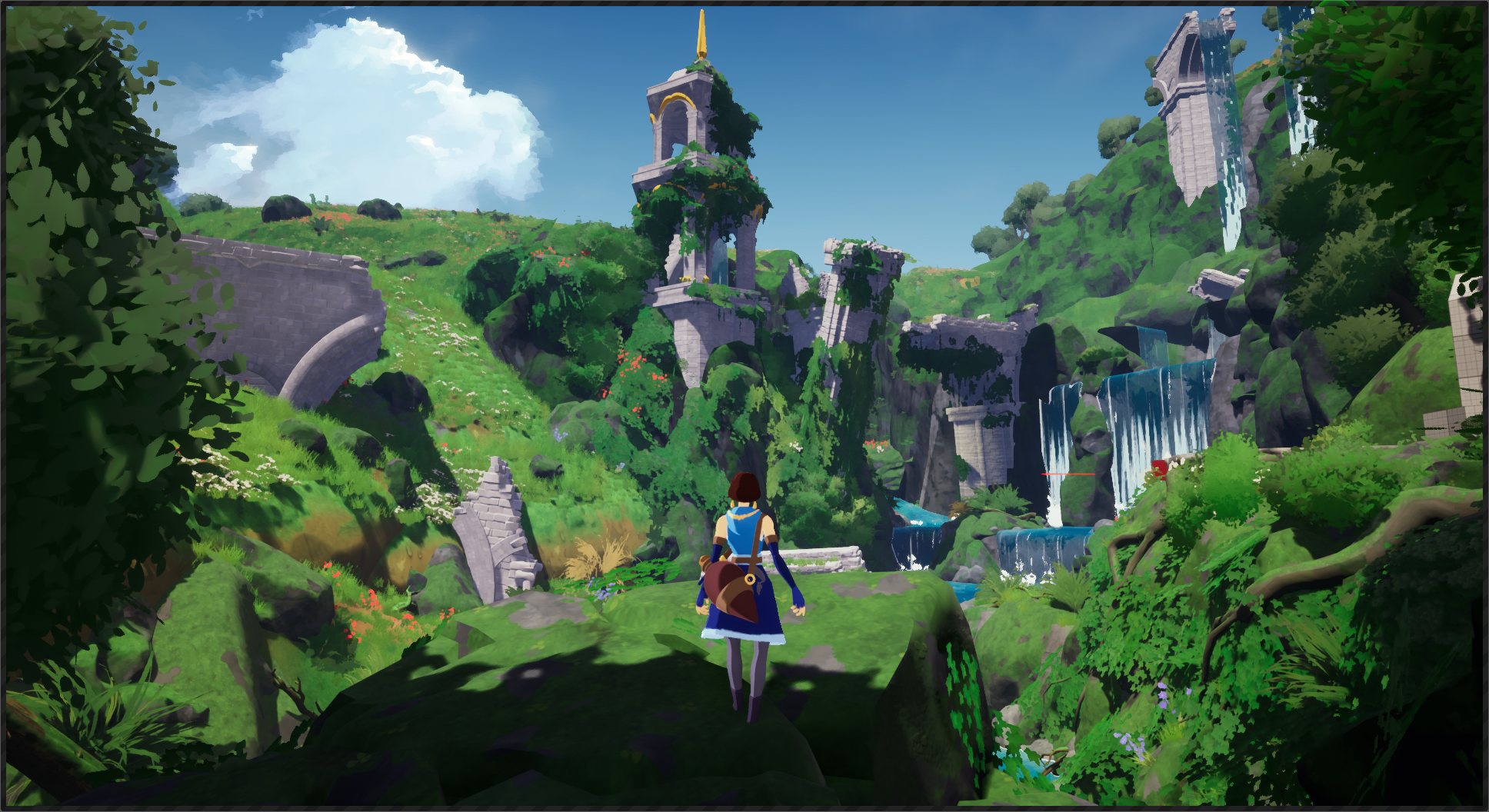
Gallery
